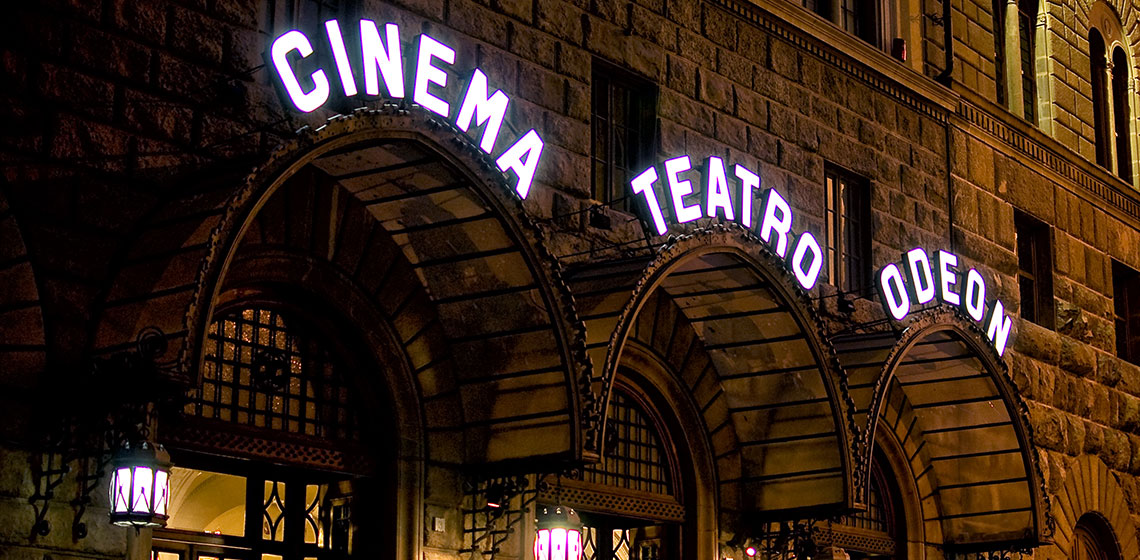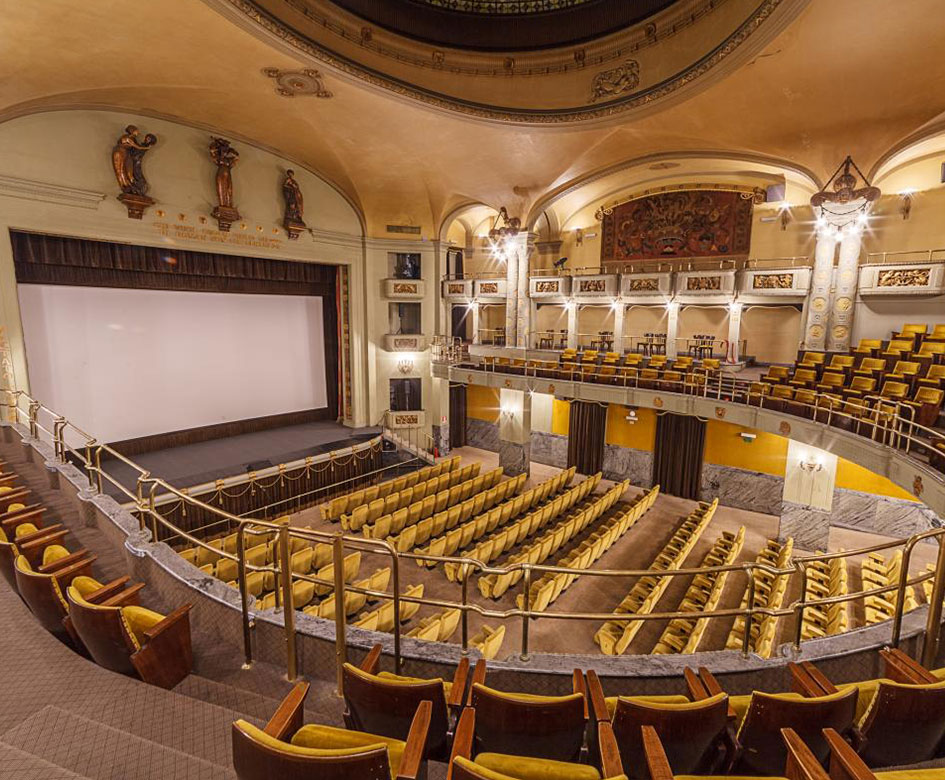
Want to know what going to the movies was like in the 1920s? Head to the Odeon
Proudly vaunting its 20th-century look, Cinema Odeon Firenze is a movie theater that shows original language films.
History always takes center stage in Florence, especially in art and culture.
Here, you can admire the architectural achievements of Renaissance masters, visit the world’s greatest artworks, stroll through timeless majestic gardens or even enjoy a movie in a 1920s cinema. Stepping inside the Odeon will seem like traveling through time; the theater has maintained its original look, today considered a real masterpiece of early 20th-century architecture. But beyond its appearance, the Odeon’s selection of films is also a prime example of Florentine culture’s international reach.
The Odeon’s History
The Odeon is located in a striking Renaissance palace in the heart of Florence: the Palazzo dello Strozzino, once home to cadet branches of the Strozzi family, named after its more famous counterpart across the street.
In the early 20th century, well-known hotel owners, the Chiari, planned to make a luxury hotel out of the old Renaissance palace. However, thanks to Eleonora Duse, the original hotel plans were abandoned to make way for the elegant movie theater we see today. The cinema eventually passed to the Compagnia Cinema Italo-Americano, who completed the restoration project. In December 1922, the cinema finally opened its doors.
In the early 20th century, well-known hotel owners, the Chiari, planned to make a luxury hotel out of the old Renaissance palace. However, thanks to Eleonora Duse, the original hotel plans were abandoned to make way for the elegant movie theater we see today. The cinema eventually passed to the Compagnia Cinema Italo-Americano, who completed the restoration project. In December 1922, the cinema finally opened its doors.
Among the films shown, the long programming of Via col Vento in 1950 and the premiere of Tutti a casa di Luigi Comencini, in 1960 with the presence of Alberto Sordi, were memorable.
In addiction to the cinematographic activity, there was the activity of the magazine theater, with Macario's shows, or the activity of musical concerts, such as the historic event of 1952: a duet by Ella Fitzgerald and Louis Armstrong.
The Inside
The inside of the Odeon transports you to another era: every detail exudes the flair of the 1920s, from the architecture to the decorations. The building boasts a majestic ellipsoidal hall with a horseshoe gallery, and adorned with lateral box seats, it merges the structure of modern cinemas with the setting of a classic theater.
The hall also features a few splashes of Art Nouveau, including the stylish (and comfortable) gold velvet chairs and a large colorful skylight above (which at the time used an electric device to operate). Even without a movie projecting on the big screen, the cinema is a spectacular sight to see.

Today
Today, the Odeon is a central thread in the city’s urban fabric. Along with other theaters in Florence (such as Cinema della Compagina, Spazio Alfieri and other minor institutions like Spazio Uno or Istituto Stensen), the Odeon remains symbolic of cultural exchange in Florence, a part of the city’s culture that extends far beyond the cinematic world. Throughout history, the Odeon has hosted film premiers of some of the most important works in cinema, top-notch international film events and world-famous celebrities.
Yet the theater’s mission remains the same as opening day: to show original language films (with subtitles), host exclusive film premiers and hold a variety of national and international film events, including festivals and conferences. And this all happens here, in a one of a kind, truly mesmerizing theater.
Yet the theater’s mission remains the same as opening day: to show original language films (with subtitles), host exclusive film premiers and hold a variety of national and international film events, including festivals and conferences. And this all happens here, in a one of a kind, truly mesmerizing theater.






 All the services are provided by local merchants
All the services are provided by local merchants By using this site you support Florence
By using this site you support Florence We offer products with high-quality standards
We offer products with high-quality standards You stay sustainable
You stay sustainable It's a 100% trustworthy website
It's a 100% trustworthy website